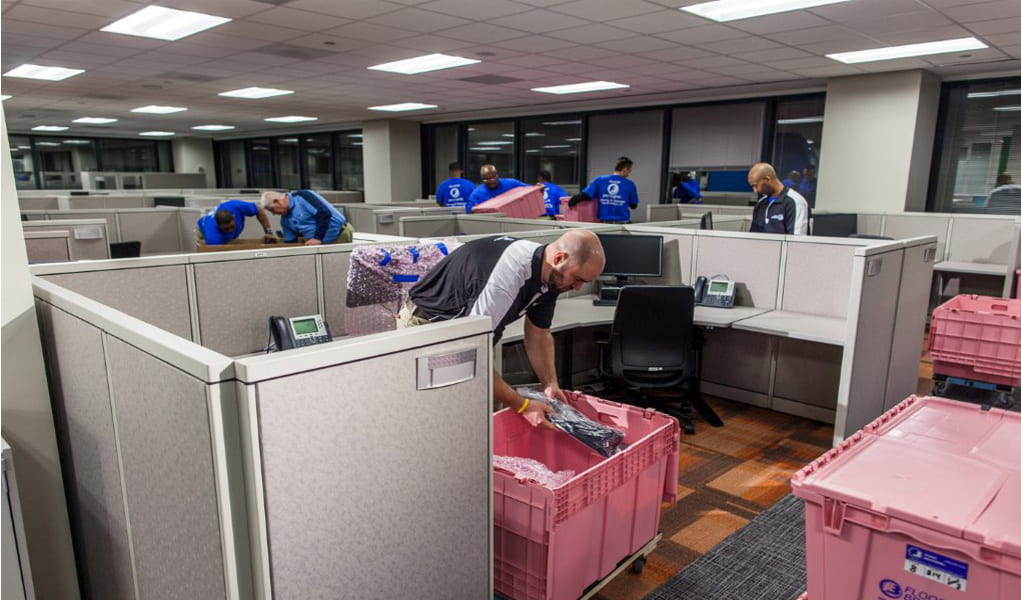Green decommissioning is the process of shutting something down, taking it apart, and disposing of its many different elements in a safe and environmentally friendly way. As organizations in almost every industry are looking to make their operations more sustainable and people are becoming increasingly environmentally conscious, this kind of decommissioning is rising in popularity.
Also commonly referred to as sustainable decommissioning, green decommissioning has become especially prevalent in the deconstruction of commercial spaces like offices and industrial warehouses. Vacating a facility can be a very complex and involved process, and while the specifics of lease agreements will vary, most require furniture and office equipment to be disassembled and removed. In some cases, there can be some very strict requirements that could result in significant financial penalties if they are not met. Planning the logistics of this process with the help of office decommissioning services from a commercial moving company like Flood Brothers Commercial Relocation will help a company avoid undue stress and expenses. Additionally, integrating green decommissioning practices into this plan will also limit the potential negative effects it may have on the environment.
Green decommissioning is primarily concerned with reducing carbon emissions and limiting the amount of equipment that ends up in a landfill. The latter is a bigger problem than you might think – it’s estimated that 17 billion pounds of office assets make their way to landfills every year. This is a staggering number, and it simply isn’t something that can sustainably continue. Research shows that finding a way to reuse just one desk can reduce a company’s carbon footprint by 36%, not to mention the cost savings. Reusing office furniture has become an increasingly scalable solution, as there are a variety of organizations that accept donations and provide resale or recycling options for businesses. The increasing number of these organizations across the country is just one of many examples of the drive to make office decommissioning more sustainable.
In addition to reducing carbon emissions and the number of office assets that end up in landfills, employing sustainable decommissioning practices can also assuage the concerns of employees and the local community and help companies meet relevant state and industry-specific renewable energy and sustainability standards.
Many green decommissioning practices can also be applied to the relocation of commercial spaces. When moving to a new office space, organizations likely won’t be taking every single piece of equipment with them. In fact, research suggests that almost 270 tons of waste are created whenever a company moves its office, along with nearly 1,500 metric tons of carbon. Whether it’s because they have old, replaceable equipment and general junk they want to get rid of, or the business will be purchasing all new equipment for their new space, sustainable decommissioning helps ensure everything they won’t be taking with them is dismantled and disposed of with little to no negative effects on the environment.
The increasing popularity of green decommissioning is no doubt influenced by the rise of remote work over the past few years. With more people and more organizations allowing their employees to work remotely, less office space and less office equipment are needed. In these cases, whether a company is downsizing to a smaller office space or getting rid of equipment they may not need any longer, sustainable decommissioning should be incorporated into the planning process. These decommissioning practices ensure they reduce their carbon footprint and limit the assets that may end up in a landfill while still allowing employees greater flexibility to work from home.


